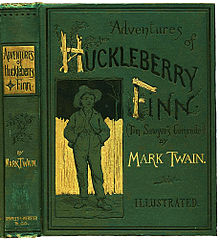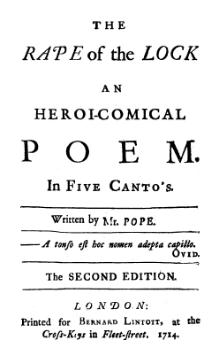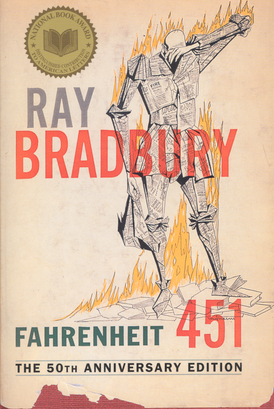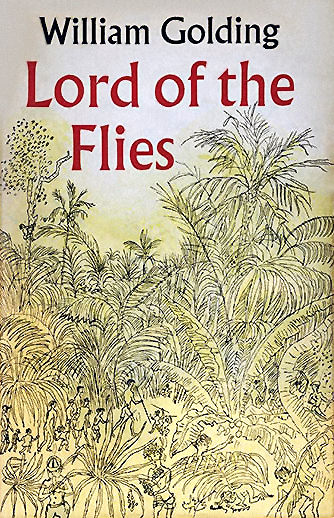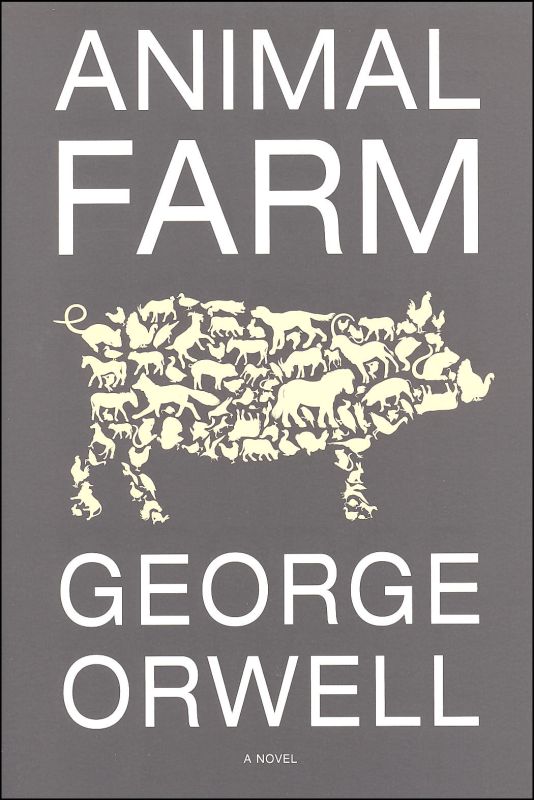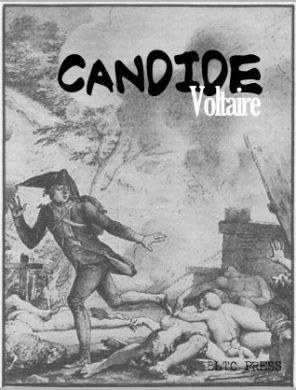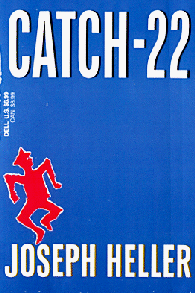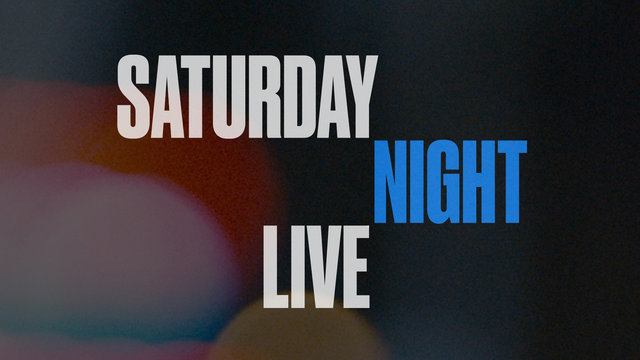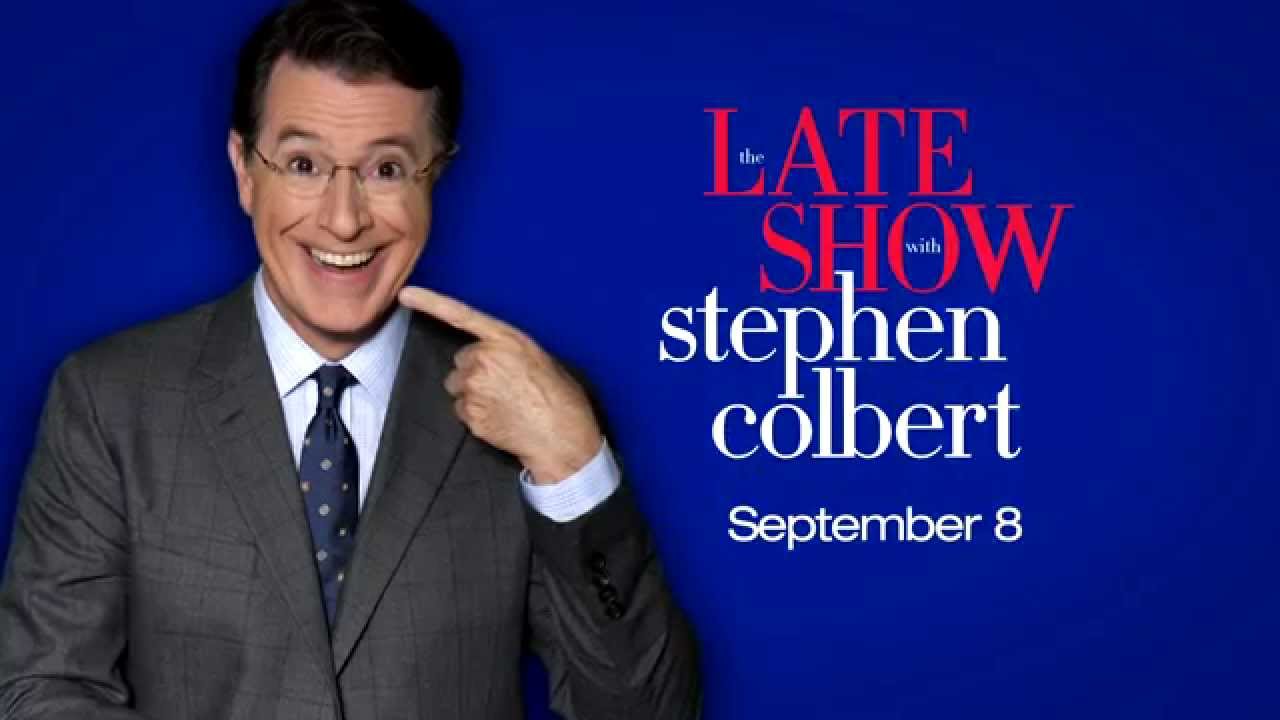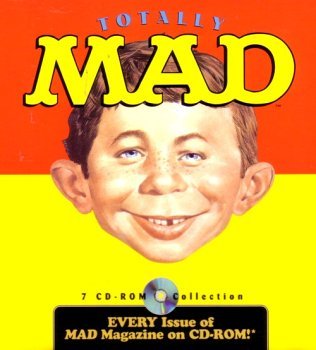Difference between revisions of "Becoming a Playwright"
From Londonhua WIKI
(→Menippean) |
|||
| (37 intermediate revisions by 2 users not shown) | |||
| Line 1: | Line 1: | ||
=Becoming a Playwright= | =Becoming a Playwright= | ||
| − | + | by [[User: Lconroy|Lauren Conroy]]<br> | |
| − | + | {{Infobox | |
| + | |bodystyle = width:25em | ||
| + | |image = [[File:Play2.jpg|300x300px|alt=Image ]] | ||
| + | |data2 = Typewriter | ||
| + | |label2 = '''Description''' | ||
| + | }} | ||
<br> | <br> | ||
| Line 9: | Line 14: | ||
=Abstract= | =Abstract= | ||
<br> | <br> | ||
| − | + | This milestone explores the defining factors of a satire, the three types of satire that exist today, and displays how the form can be seen in many novels and plays throughout history. Satires identify and exploit the social issues and social injustices that a writer sees. They are a creative, quick witted way of attacking the problem using different methods such as self-deprecating humor, creating striking or disgusting images and scene, gentle ridicule, and exaggeration. More modern satires have started to take place on television. They publicly berated and criticize public figures such as celebrities and political representatives. However, this has blurred the lines of what a satire truly is, so this milestone is to set people straight on their satire knowledge. The culmination of this project is a short, original play that I wrote, which embodies specific satirical elements in a way that is culturally relevant to tourism in London. | |
| − | + | __TOC__ | |
| − | + | <br><br> | |
| + | =Introduction= | ||
<br> | <br> | ||
| − | + | This milestone examines what defines a satire and the three different type of satires, Horatian, Juvenalian, and Mennippean. It is meant to introduce people to satire, which leads back from all the way to the Greek writers. I created a play that uses the Horatian and Juvenalian style of satires and is based on the theme of tourism in London. The play highlights the damage that tourists to the places they visit and that local thinking could prevent damaging incidents, such as the destruction of statues buy standing on them. This project incorporates my love for theater and comedy and explains what defines satires. <!--This Capstone is culmination of all that I have learned about theater in London and at WPI and in this milestone I discussed what defines a satire. Satires can be difficult to write because people have different senses of humor. Many writers don't know that satires are created to prove a point and to objectify a problem one may seen in there everyday lives. As an aspiring satirist, I did research on satires from the past to the present and what moves the audience to laugh and what provokes deep though. I then used that information to create my own satire based on my interactions with the local tourist of London and how they can be a detriment to the overall environment of the surrounding areas they tour. I wanted to shed some light on the negative impacts on tourist on London.--> | |
| + | <br><br> | ||
| + | At WPI, I took two theater classes in my A and B term with Professor Susan Vick and Professor Barbara McCarthy. In my Introduction to Drama class, I preformed several lines from Shakespeare's Much Ado About Nothing as well as wrote a five minute monologue which was preformed by another student for the class. In my American Drama class, several classmates and I preformed the chaotic dinner scene from ''August: Osage County'' for the class. In all, I have very limited experience preforming in and writing play scripts. | ||
| + | <br><br> | ||
| + | My objective was to understand what an actual satire meant and what defining factors created a satire. I then wanted to try my own hand at creating a more modern satire based on the negative impacts of tourism on the surrounding tourist areas in London such as the London Eye and local museums. Based on my research, I found that modern satires were different from satires of the past because of two factors which both were based on a factor that cannot have been created in the past, time. The first factor was that the past satire writers did not have as much history behind them and that satires were not a defined writing style back then. The second reason was because television and modern day technologies have helped spread the genre quite farther than any book could have. I loved getting to know more about what a satire really is and how they have helped spread messages of turmoil and unrest to the masses with a slight twinge of comedy. | ||
| + | |||
<br> | <br> | ||
| − | |||
<br> | <br> | ||
| Line 23: | Line 33: | ||
==Satire== | ==Satire== | ||
<br> | <br> | ||
| − | "Satire" is derived from the Latin word satura meaning "full" which then came to mean "a mixture full of different things" <ref>HIGHET, G. (1962). Anatomy of Satire. Princeton University Press. Retrieved from http://www.jstor.org.ezproxy.wpi.edu/stable/j.ctt13x0t9t</ref> The word satura, which | + | "Satire" is derived from the Latin word satura meaning "full" which then came to mean "a mixture full of different things" <ref>HIGHET, G. (1962). Anatomy of Satire. Princeton University Press. Retrieved from http://www.jstor.org.ezproxy.wpi.edu/stable/j.ctt13x0t9t</ref> The word satura, which denotes only Roman verse satire and what Quintillian strictly used, states that the satire must use hexameter form. This form consists of metric line containing six feet, most often consisting of an accented syllable followed by two unaccented syllables, which is called dactyl. <ref>Hexameter. (n.d.). Retrieved May 25, 2017, from https://www.poetryfoundation.org/resources/learning/glossary-terms/detail/hexameter </ref> It is one of the most original, challenging and memorable forms of literature and has been used by writers such as Voltaire, Rabelais, and Petronius. Gilbert Highet, the author of ''Anatomy of Satire'' wrote that satire "pictures real men and women, often in lurid colours, but always with unforgettable clarity. It uses the bold and vivid language of its own time, eschewing stale cliches and dead conventions." Unlike other patterns of literature, which can feel remote and formal, satire is more free, easy and direct to the point. With the best satirist there is very little convention, but much reality. The best way to discover and learn about satire is to look at what themes are regarded by satirists as important and inflectional. In satire, there are three categories that a work may fall into, Horatian, Juvenalian, and Menippean. Some, however, may not fall into these categories at all because there is no defined way to write a satire. |
<br> | <br> | ||
| Line 29: | Line 39: | ||
==Categories of Satire== | ==Categories of Satire== | ||
===Horatian=== | ===Horatian=== | ||
| − | [[File:horace.jpg| | + | {{Infobox |
| + | |title = Horace | ||
| + | |bodystyle = width:25em | ||
| + | |image = [[File:horace.jpg|400x350px|alt=Image ]] | ||
| + | |data2 = A Roman satirist | ||
| + | |label2 = '''Description''' | ||
| + | }} | ||
| + | |||
<br> | <br> | ||
| − | Horace was the son of a freed slave turned auctioneer's assistant and | + | Horace was the son of a freed slave turned auctioneer's assistant and was probably of Sabellian hillman stock of Italy's central highlands. His father was well off enough to take his son to Rome and ensure that his son was getting the best possible education in the school of a famous fellow Sabellian named Orbilius. He then went and studied and attended lectures at the Academy in Athens, Greece. When Julius Caesar was assassinated and when the empire was in possession of two rulers, Horace joined Brutus' army and was made tribunus militum, which was an exceptional honor for a freedman's son. However, after being put in charge of Brutus' and Cassius' legions and suffering total defeat he had to retreat and find political asylum. <br> |
| − | While seeking asylum, he works on his first book of satires which contains ten poems written in hexameter verse. These satires | + | While seeking asylum, he works on his first book of satires which contains ten poems written in hexameter verse. These satires focused on Horace's adhesion to Octavian's attempts to deal with contemporary challenges of restoring traditional morality. He defends small landowners from large estates, combating debt and usury, and encouraging the "new men" to take their place next to the traditional republican aristocracy. The satires praised people who earn their own money and their own way in life without the help of family lineage. He believed in self-sufficiency for a quite life and it is the basis for a lot of these poems. His next few poems emphasize the mockery of Philippi and throws personal attacks and ridicule on the social abuses, not individual people. Epodes seven, nine, and sixteen shows a more sensitive side to the political verse due to the uncertainty of the future when Octavian and Mark Antony meet and discuss the current hostilities. His second book was published around 31 BC and becomes decreasingly pugnacious towards public figures such as businessmen and courtesans. The last ode of the first three books suggests that Horace did not propose to write anymore such poems. In total, Horace published three books which contained 88 short poems. <br>Horatian odes are short in nature and are written in stanzas of two or four lines and aims to mitigate situations with kindness rather than anger. It normally criticizes social immoralities using gentle and lighthearted wit. "It directs wit, exaggeration, and self-deprecating humour toward what it identifies as folly, rather than evil. Horatian satire's sympathetic tone is common in modern society."<ref>Sharma, R. ''"Comedy" in New Light-Literary Studies.''</ref> |
<ref>Grant, M. (n.d.). Horace. Retrieved May 31, 2017, from https://www.britannica.com/biography/Horace-Roman-poet</ref><br><br> | <ref>Grant, M. (n.d.). Horace. Retrieved May 31, 2017, from https://www.britannica.com/biography/Horace-Roman-poet</ref><br><br> | ||
'''Commonly Known Examples of Horatian Satires:'''<br> | '''Commonly Known Examples of Horatian Satires:'''<br> | ||
''Adventures of Huckleberry Finn'' Mark Twain<br> | ''Adventures of Huckleberry Finn'' Mark Twain<br> | ||
''The Rape of the Lock'' Alexander Pope<br><br> | ''The Rape of the Lock'' Alexander Pope<br><br> | ||
| + | <gallery mode=(packed)> | ||
| + | Image:Finn.JPG|''''Adventures of Huckleberry Finn'''' | ||
| + | Image:Lock.jpg|''''The Rape of the Lock'''' | ||
| + | </gallery> | ||
Excerpts from ''Rape of the Lock''<br><br> | Excerpts from ''Rape of the Lock''<br><br> | ||
“Not louder shrieks to pitying Heave are cast, | “Not louder shrieks to pitying Heave are cast, | ||
| Line 50: | Line 71: | ||
===Juvenalian=== | ===Juvenalian=== | ||
| − | [[File:juv.jpg| | + | {{Infobox |
| + | |title = Juvenal | ||
| + | |bodystyle = width:25em | ||
| + | |image = [[File:juv.jpg|300x300px|alt=Image ]] | ||
| + | |data2 = A Roman poet and satirist | ||
| + | |label2 = '''Description''' | ||
| + | }} | ||
| + | |||
<br> | <br> | ||
| − | Juvenal was a Roman poet who was considered one of the most influential and powerful satiric poets. He was born into an influential family and became an officer in the army as well as was on the way to becoming an administration on emperor Domitian's service. He was not promoted to his desired position and decided to write a satire declaring that | + | Juvenal was a Roman poet who was considered one of the most influential and powerful satiric poets. He was born into an influential family and became an officer in the army as well as was on the way to becoming an administration on emperor Domitian's service. He was not promoted to his desired position and decided to write a satire declaring that court favors was the reason he was not promoted. This resulted in his banishment to Syene, which today is Aswan, Egypt and the confiscation of all his property. After the assassination of Domitian, he moved back to Rome where he rebuilt his life and continued writing satires. In his later years, his satires contained more human emotion, which may have marked that he had found solace from his rough beginnings in Rome. His is estimated to have died in 127 AD and had left behind 16 satiric poems.<ref>Highet, G. (n.d.). Juvenal. Retrieved May 31, 2017, from https://www.britannica.com/biography/Juvenal </ref> |
<br> | <br> | ||
| − | Much of Juvenal's poems attack the conditions one had lived in Rome with the Roman rulers of Domitian, Nerva, Trajan and Hadrian. These poems were compiled into five separate books. The first book contains the first five satirical poems he had written. It encompasses his views in retrospective of the tyrannical reign of Domitian and was published between 100 and 110. The second book was the largest of books published and contained on satire 6. It covered the topics of the year 115. Book third contained satire seven , eight, and nine and opens with praised for an emperor, probably Hadrian, who created a literary institute to assist authors. Juvenal believes that this emperor is the only reason that literature may survive. Not many conclusions can be drawn on what is written in book four and book five references year 127 and contains satires 13-16. | + | Much of Juvenal's poems attack the conditions one had lived in Rome with the Roman rulers of Domitian, Nerva, Trajan, and Hadrian. These poems were compiled into five separate books. The first book contains the first five satirical poems he had written. It encompasses his views in retrospective of the tyrannical reign of Domitian and was published between 100 and 110. The second book was the largest of books published and contained on satire 6. It covered the topics of the year 115. Book third contained satire seven , eight, and nine and opens with praised for an emperor, probably Hadrian, who created a literary institute to assist authors. Juvenal believes that this emperor is the only reason that literature may survive. Not many conclusions can be drawn on what is written in book four and book five references year 127 AD and contains satires 13-16. |
<br> | <br> | ||
| − | Juvenal's structure to satires is unchanging and can be see in all 16 satires. There is a clear and forceful approach and tone to them. Gilbert Highet states that:<blockquote>They are full of skillfully expressive effects in which the sound and rhythm mimic and enhance the sense | + | Juvenal's structure to satires is unchanging and can be see in all 16 satires. There is a clear and forceful approach and tone to them. Gilbert Highet states that:<blockquote>They are full of skillfully expressive effects in which the sound and rhythm mimic and enhance the sense, and they abound in trenchant phrases and memorable epigrams</blockquote> Juvenal describes the striking and disgusting scenes with clarity making them unforgettable and this is done by using anger and extreme ridicule. He displays the person who performs the social immoralities appear as horrific or incompetent.<br><br> |
'''Commonly Known Examples of Juvenal Satires:'''<br> | '''Commonly Known Examples of Juvenal Satires:'''<br> | ||
''Fahrenheit 451'' Ray Bradbury <br> | ''Fahrenheit 451'' Ray Bradbury <br> | ||
| Line 64: | Line 92: | ||
''Candide'' Voltaire <br> | ''Candide'' Voltaire <br> | ||
''Catch-22'' Joseph Heller<br><br> | ''Catch-22'' Joseph Heller<br><br> | ||
| + | |||
| + | <gallery mode=(packed)> | ||
| + | Image:451.png|''Fahrenheit 451'' | ||
| + | Image:Flies.jpg|''Lord of the Flies'' | ||
| + | Image:1984.jpg|''Nineteen Eighty-Four'' | ||
| + | Image:AnimalFarm.jpg|''Animal Farm'' | ||
| + | Image:Can.jpg|''Candide'' | ||
| + | Image:Catch22.gif|''Catch-22'' | ||
| + | </gallery> | ||
Excerpts from ''Animal Farm'' and ''Lord of the Flies'' | Excerpts from ''Animal Farm'' and ''Lord of the Flies'' | ||
| Line 75: | Line 112: | ||
===Menippean=== | ===Menippean=== | ||
| − | [[File: | + | {{Infobox |
| + | |title = Menippus | ||
| + | |bodystyle = width:25em | ||
| + | |image = [[File:Men.jpg|300x300px|alt=Image ]] | ||
| + | |data2 = A Greek satirist | ||
| + | |label2 = '''Description''' | ||
| + | }} | ||
| + | |||
<br> | <br> | ||
| − | Menippus was a Cynic satirist who satirized other philosophers, | + | Menippus was a Cynic satirist who satirized other philosophers, and was called σπουδογέλοιος or "the man who jokes about serious things." Very little is know about his life and works because all of it was lost. Sources say that he was a slave who somehow won his freedom and lived in Thebes, Greece.<ref>Stephanus Byz.; Strabo, xvi.</ref>Though his works are lost much of his style can be seen in his imitators Varro, Seneca, and Lucian. His approach was new and inspiring because he presented his philosophical ideas in a way that is reached a very wide audience. His works abandoned the serious form of dialog and essay and instead used the cynic message in a satiric style to mock institutions, ideas and normal conventions in a mixture of prose and verse. He used unusual settings such as a decent into Hades , an auction, and a symposium to impose a striking effect on the audiences and readers. Remanence of his works can be seen in other authors works such as Petronius Arbiter who wrote ''Satyricon'' which is an ideal tale in verse and prose, but contains long digressions where the author expresses his views on unrelated topics that are not effecting the pot which is true to the Menippean tradition. <ref>The Editors of Encyclopædia Britannica. (n.d.). Menippus. Retrieved May 31, 2017, from https://www.britannica.com/biography/Menippus </ref> |
<br> | <br> | ||
The Menippean for is defined as a intellectually humorous work that is characterize by its random contents, the display of curious information, and its comical discussion of serious and philosophical topics. The humour in works such as Lewis Carroll's ''Alice's Adventures in Wonderland'' is more cheerfully intellectual and less aggressive than in works such as Robert Burton's ''Anatomy of Melancholy'' which we would usually call satires, although it holds up contemporary intellectual life to gentle ridicule. | The Menippean for is defined as a intellectually humorous work that is characterize by its random contents, the display of curious information, and its comical discussion of serious and philosophical topics. The humour in works such as Lewis Carroll's ''Alice's Adventures in Wonderland'' is more cheerfully intellectual and less aggressive than in works such as Robert Burton's ''Anatomy of Melancholy'' which we would usually call satires, although it holds up contemporary intellectual life to gentle ridicule. | ||
| Line 86: | Line 130: | ||
==Modern Satires== | ==Modern Satires== | ||
<br> | <br> | ||
| − | Today's satires are somewhat similar to the past satirists such as Menippus, Horace and Juvenal, however they still do use the following characteristics of irony and critique. The irony humorously points out the issues that are being critiqued in a way that many can see and understand. Critique aids in pointing out situations of human or organization where they fail in behaviour, vice or folly and leads to the audience desiring some sort of social change. However this critique does not have an implicit and immediate solution to the issue at hand. They almost look to the audience to draw their own conclusions on how the change can be implemented and carried out. Megan LeBoeuf, for her senior thesis stated that "The critiqued behavior deconstructs itself within the satirical work by being obviously absurd, most often because it is exaggerated or taken out of its normal context." <ref>LeBoeuf, Megan. "The Power Of Ridicule: Analysis Of Satire". Undergraduate. University of Rhode Island, 2007. Print.</ref> | + | Today's satires are somewhat similar to the past satirists such as Menippus, Horace, and Juvenal, however, they still do use the following characteristics of irony and critique. The irony humorously points out the issues that are being critiqued in a way that many can see and understand. Critique aids in pointing out situations of human or organization where they fail in behaviour, vice or folly and leads to the audience desiring some sort of social change. However, this critique does not have an implicit and immediate solution to the issue at hand. They almost look to the audience to draw their own conclusions on how the change can be implemented and carried out. Megan LeBoeuf, for her senior thesis, stated that "The critiqued behavior deconstructs itself within the satirical work by being obviously absurd, most often because it is exaggerated or taken out of its normal context." <ref>LeBoeuf, Megan. "The Power Of Ridicule: Analysis Of Satire". Undergraduate. University of Rhode Island, 2007. Print.</ref> |
| − | <br> In the past, there was a more certainty to what satire was, but today with the influx of shows like SNL, ''The Late Show'' with Stephen Colbert and MadTV the lines have been blurred between comedy and and actual satires. Many believe that in this day and age we use the term satire to freely. A Canadian commentator, Rex Murphy points out that "we throw the term ‘satire’ around rather too generously these days,” and “it's a free upgrade when making simple fun of someone passes as satire” <ref>Murphy, Rex. "Satire Has Forgotten Its Function." The Globe and Mail, 2006. Vol. A. </ref> Today's satires differ in really only two categories where the first is the medium that the satire is presented. In the past satires were mostly poems and novels, but with the age of technology satires are presented using a more viewable medium such as plays and television shows. The second difference is that the writers today have a lot more background information to go off of so they reference past writers works. The satires of the Greek and Roman times had very little to go off of such as old traditions and their current political turmoils. | + | <br> In the past, there was a more certainty to what satire was, but today with the influx of shows like SNL, ''The Late Show'' with Stephen Colbert and MadTV the lines have been blurred between comedy and and actual satires. Many believe that in this day and age we use the term satire to freely. A Canadian commentator, Rex Murphy points out that "we throw the term ‘satire’ around rather too generously these days,” and “it's a free upgrade when making simple fun of someone passes as satire” <ref>Murphy, Rex. "Satire Has Forgotten Its Function." The Globe and Mail, 2006. Vol. A. </ref> Today's satires differ in really only two categories where the first is the medium that the satire is presented. In the past satires were mostly poems and novels, but with the age of technology, satires are presented using a more viewable medium such as plays and television shows. The second difference is that the writers today have a lot more background information to go off of so they reference past writers works. The satires of the Greek and Roman times had very little to go off of such as old traditions and their current political turmoils. |
| + | |||
| + | <gallery mode=(packed)> | ||
| + | Image:Snl.jpg|''Saturday Night Live'' | ||
| + | Image:Late.jpg|''The Late Show'' with Stephen Colbert | ||
| + | Image:Totallymad.jpg|''MadTV'' | ||
| + | </gallery> | ||
<br> | <br> | ||
| + | |||
=Section 2: Deliverable= | =Section 2: Deliverable= | ||
<br> | <br> | ||
| − | ''The Types of Tourists Found in London | + | {{Infobox |
| − | as told by a "Stupid" American Tourist'' | + | |title = The Play |
| − | + | |bodystyle = width:25em | |
| − | + | |image = [[File:Coverpg.JPG|x400px|alt=Image ]] | |
| − | + | |data2 = Cover of ''The Types of Tourists Found in London as told by a "Stupid" American Tourist'' | |
| + | |label2 = '''Description''' | ||
| + | }} | ||
| + | ''The Types of Tourists Found in London as told by a "Stupid" American Tourist'' | ||
| + | <br><br> | ||
| + | By researching satirical plays, I decided to implement my research into a one act satirical play, which I wrote during my time in London and attributed to "an unknown tourist". Initially, I was unsure of what topic my play would be on, but then I looked at myself and then looked at London. My play explored the effects of tourism on the local peoples and surrounding area of London and how even though tourism effects the economy in a positive way, the tourist themselves can reek havoc on the place they are exploring. <br> | ||
| + | Some stories that are published in newspapers about tourist who hurt wildlife and break priceless just to get photographs are heartbreaking. By creating a play about the what damage "bad" tourists can do, I hope will shed some light on their harm to the nation they are visiting. | ||
<br> | <br> | ||
==The Play Script== | ==The Play Script== | ||
<br> | <br> | ||
| − | [[:File:The_Types_of_Tourists_Found_in_London.pdf|Click to See Play Script]]<br> | + | '''[[:File:The_Types_of_Tourists_Found_in_London.pdf|Click to See Play Script]]'''<br> |
<br> | <br> | ||
| − | + | ===Play Synopsis=== | |
<br> | <br> | ||
| − | At the beginning of the play, the first scene, a tour guide is at a terminal in Heathrow Airport waiting to lead a group of five tourists through London to see the sights and sounds. The tour guide is waiting for all her members to arrive | + | At the beginning of the play, the first scene, a tour guide is at a terminal in Heathrow Airport waiting to lead a group of five tourists through London to see the sights and sounds. The tour guide is waiting for all her members to arrive but decides to begin her search about the tour before everyone arrive because she is filled with excitement. A tourist, who is missing from the group, arrives out of breath and she greets him and continues on with her speech about what they will be doing throughout the tour. She is interrupted by another member of her group asking if there will be food any time soon. She replies that when they arrive at Blackfriars Station they will all have a chance to grab a snack. They board a train that is going to Blackfriars Station and she begins to setup a projector and screen. She asks he group what the leading cause of tourist death and arrests were. One snarky group member replies starving to death, but she ignores the comment. She explains that with her experience in this industry, the leading cause would have to be general stupidity. She then goes to the first scene of the slide.<br><br> |
| − | |||
| − | |||
| − | |||
| − | |||
| + | The second scene is set a near the London Eye. There are two drunk character who believe that climbing the London Eye would be just the adventure to top off their night of excitement. They get about 30 meters up and get called down by a police officer. They ignore his call and climb higher. He requests backup, but the guy begins to slip and it is too late. We assume that he had fallen off and passed away. Then it transitions back to the train where the tourists are alarmed, but some had thought that climbing the London Eye wasn’t a bad idea until they saw the deadly outcome. The tour guide is in utter awe and shock that her tour group is that idiotic, but proceeds on with the next scene. <br><br> | ||
| + | |||
| + | The third scene is set in South Kensington at the Victoria and Albert Museum. There is a group of students studying the sculptures there and are loud and obnoxious to the other patrons around them. They ignore all signs around them that say no climbing on the art and not flash photography. After taking multiple flash photos, a girl decides she cannot get the right angle of a statue, so she climbs on the one across from it. It cracks and the group runs away, but are caught by security. Then the scene transitions back to the train, where the group still think that doing this was okay. The tour guide is flustered and makes comments on how she should have stayed in school. <br><br> | ||
| + | |||
| + | The fourth scene is set in one of the many park in London. There is a romantic couple who is walking around and has food to feed the birds. They then think of covering one of them in bread would create a cute Mary Poppins moment but are surprised when the birds attack the couple for the bread. The couple come out of the situation with lots of scratches and cuts and there is an assumed break up following the event. The tour group still does not see what is wrong with feeding the birds, so the tour guide makes a comment on how the group should have a raised IQ. <br><br> | ||
| + | |||
| + | The final scene is set in Trafalgar Square at night. There is a group of girls who are taking pictures in very dangerous situations like in the street with oncoming traffic. They are almost hit multiple times but don’t see the harm of what they are doing. They then go drinking and try to take more pictures. They then cause a 10-car pileup and the police come and arrest them. The tourist group then begins to understand the gravity of these situations and that the people are putting themselves and others in harm’s way. The train ride ends just in time and the tour guide and her group head out of the station and into the hustle and bustle of the London streets. | ||
<br> | <br> | ||
| − | === | + | <br> |
| + | |||
| + | ===Contextual Examples of Juvenalian Satire=== | ||
<br> | <br> | ||
Juvenalian satire focuses on the degradation and vilification and in this play, specifically scene two, where two women were depicted as being incompetent and complicit in their own malicious acts towards the everyday citizens of London. They decided that walking and taking pictures in the middle of the road cause a problem. Because of their negligence, they cause a ten car pileup, which results in many people to be hurt and three people to die. Chole states, "Whatever if they hit us isn’t it their fault?" She doesn't care about anyone but herself and her own enjoyment while she is in London even if it causes others pain. This scene is profound and striking and their idiocy is ridiculed with anger and abhor. The death of loved ones was caused by two girls making the decision to take pictures on a busy road. | Juvenalian satire focuses on the degradation and vilification and in this play, specifically scene two, where two women were depicted as being incompetent and complicit in their own malicious acts towards the everyday citizens of London. They decided that walking and taking pictures in the middle of the road cause a problem. Because of their negligence, they cause a ten car pileup, which results in many people to be hurt and three people to die. Chole states, "Whatever if they hit us isn’t it their fault?" She doesn't care about anyone but herself and her own enjoyment while she is in London even if it causes others pain. This scene is profound and striking and their idiocy is ridiculed with anger and abhor. The death of loved ones was caused by two girls making the decision to take pictures on a busy road. | ||
| Line 120: | Line 182: | ||
<br> | <br> | ||
| − | ===Examples of Horatian Satire in "The Types of Tourists Found in London as told by a "Stupid" American Tourist" | + | ===Contextual Examples of Horatian Satire=== |
| + | <!-- in "The Types of Tourists Found in London as told by a "Stupid" American Tourist"--> | ||
<br> | <br> | ||
Horatian satire focuses on the using exaggeration and self-deprecating humour to express the gravity of the situations that they put themselves in. It playfully criticizes a social vice thorough gentle and lighthearted humor. I used Horatian satire quite a bit more than Juvenalian because I wanted this play to be a more blithe comedy with multiple lessons than a harsh reality check fulled by anger and ridicule. | Horatian satire focuses on the using exaggeration and self-deprecating humour to express the gravity of the situations that they put themselves in. It playfully criticizes a social vice thorough gentle and lighthearted humor. I used Horatian satire quite a bit more than Juvenalian because I wanted this play to be a more blithe comedy with multiple lessons than a harsh reality check fulled by anger and ridicule. | ||
<br> | <br> | ||
| − | In scene three, the group of students are depicted as rude and annoying and eventually break a priceless sculpture in a museum. The lighthearted humor comes from the tour guide and the tour group on the train when they comment on what the group had or had not done wrong. Tourist one states," That group is so stupid | + | In scene three, the group of students are depicted as rude and annoying and eventually break a priceless sculpture in a museum. The lighthearted humor comes from the tour guide and the tour group on the train when they comment on what the group had or had not done wrong. Tourist one states," That group is so stupid if you are going to run from the security you always need to carry marbles to trip them up." The satirists tool of irony shows that the tour group is calling the group of students stupid, even though they themselves had thought that climbing on the statues was alright as well. |
<br> | <br> | ||
| − | In scene four, a young couple decides that feeding the birds and laying out bread on one of their bodies would be a cute romantic idea. This is an exaggeration of what would actually happen in real life | + | In scene four, a young couple decides that feeding the birds and laying out bread on one of their bodies would be a cute romantic idea. This is an exaggeration of what would actually happen in real life but is exaggerated to stress how their idea is critically flawed. Reese ironically states, "Sure, like what could go wrong." They didn't realize that the birds would attack when if there was food involved. The irony adds the deprecating humor and exaggerated situation add to the absurdity of the situation that the couple got into. |
<!--The play focuses on a tour group of 5 people coming from Heathrow Airport and taking the Underground | <!--The play focuses on a tour group of 5 people coming from Heathrow Airport and taking the Underground | ||
| − | Each situation seems obviously wrong to the common person, which is part of the satirist's tool of irony, but the tour group just don't seem to understand what "normal" people should do while traveling. For this play, I used some of the Horatian form of satire, which playfully criticizes a social vice thorough gentle and lighthearted humor as well as a small part in Juvenalian satire, which attempts to make the wrong doers appear monstrous or incompetent. The tourists on the train at the end of each scene act as a comic relief with light humor. In the second scene, the use of Horatian and Juvenalian is evident. The characters of Derick and Nick are clearly written as incompetent and idiotic. It makes fun of their "stupid" decision of climbing the London Eye with sarcastic humor from the police officer's small part. The third scene | + | Each situation seems obviously wrong to the common person, which is part of the satirist's tool of irony, but the tour group just don't seem to understand what "normal" people should do while traveling. For this play, I used some of the Horatian form of satire, which playfully criticizes a social vice thorough gentle and lighthearted humor as well as a small part in Juvenalian satire, which attempts to make the wrong doers appear monstrous or incompetent. The tourists on the train at the end of each scene act as a comic relief with light humor. In the second scene, the use of Horatian and Juvenalian is evident. The characters of Derick and Nick are clearly written as incompetent and idiotic. It makes fun of their "stupid" decision of climbing the London Eye with sarcastic humor from the police officer's small part. The third scene uses Horatian satire to poke fun at people not following the signs that say no flash photography and that some people think it is actually a good idea to stand on the priceless artifacts that are in museums. The fourth scene also uses the Horatian form of satire since it mocks a couple who thinks feeding the birds is a fun and romantic idea. The fifth scene is the most relatable to London currently because many of them don't believe that their taking pictures on busy streets is dangerous. This is definitely a problem that happens in any touristy place, but in London, I have seen it happen quite a bit. --> |
| − | + | <br> | |
<br> | <br> | ||
| Line 138: | Line 201: | ||
<br> | <br> | ||
| − | = | + | =References= |
<br> | <br> | ||
Latest revision as of 12:59, 21 June 2017
Becoming a Playwright
 | |
| Description | Typewriter |
|---|---|
Abstract
This milestone explores the defining factors of a satire, the three types of satire that exist today, and displays how the form can be seen in many novels and plays throughout history. Satires identify and exploit the social issues and social injustices that a writer sees. They are a creative, quick witted way of attacking the problem using different methods such as self-deprecating humor, creating striking or disgusting images and scene, gentle ridicule, and exaggeration. More modern satires have started to take place on television. They publicly berated and criticize public figures such as celebrities and political representatives. However, this has blurred the lines of what a satire truly is, so this milestone is to set people straight on their satire knowledge. The culmination of this project is a short, original play that I wrote, which embodies specific satirical elements in a way that is culturally relevant to tourism in London.
Contents
Introduction
This milestone examines what defines a satire and the three different type of satires, Horatian, Juvenalian, and Mennippean. It is meant to introduce people to satire, which leads back from all the way to the Greek writers. I created a play that uses the Horatian and Juvenalian style of satires and is based on the theme of tourism in London. The play highlights the damage that tourists to the places they visit and that local thinking could prevent damaging incidents, such as the destruction of statues buy standing on them. This project incorporates my love for theater and comedy and explains what defines satires.
At WPI, I took two theater classes in my A and B term with Professor Susan Vick and Professor Barbara McCarthy. In my Introduction to Drama class, I preformed several lines from Shakespeare's Much Ado About Nothing as well as wrote a five minute monologue which was preformed by another student for the class. In my American Drama class, several classmates and I preformed the chaotic dinner scene from August: Osage County for the class. In all, I have very limited experience preforming in and writing play scripts.
My objective was to understand what an actual satire meant and what defining factors created a satire. I then wanted to try my own hand at creating a more modern satire based on the negative impacts of tourism on the surrounding tourist areas in London such as the London Eye and local museums. Based on my research, I found that modern satires were different from satires of the past because of two factors which both were based on a factor that cannot have been created in the past, time. The first factor was that the past satire writers did not have as much history behind them and that satires were not a defined writing style back then. The second reason was because television and modern day technologies have helped spread the genre quite farther than any book could have. I loved getting to know more about what a satire really is and how they have helped spread messages of turmoil and unrest to the masses with a slight twinge of comedy.
Section 1: Background
Satire
"Satire" is derived from the Latin word satura meaning "full" which then came to mean "a mixture full of different things" [1] The word satura, which denotes only Roman verse satire and what Quintillian strictly used, states that the satire must use hexameter form. This form consists of metric line containing six feet, most often consisting of an accented syllable followed by two unaccented syllables, which is called dactyl. [2] It is one of the most original, challenging and memorable forms of literature and has been used by writers such as Voltaire, Rabelais, and Petronius. Gilbert Highet, the author of Anatomy of Satire wrote that satire "pictures real men and women, often in lurid colours, but always with unforgettable clarity. It uses the bold and vivid language of its own time, eschewing stale cliches and dead conventions." Unlike other patterns of literature, which can feel remote and formal, satire is more free, easy and direct to the point. With the best satirist there is very little convention, but much reality. The best way to discover and learn about satire is to look at what themes are regarded by satirists as important and inflectional. In satire, there are three categories that a work may fall into, Horatian, Juvenalian, and Menippean. Some, however, may not fall into these categories at all because there is no defined way to write a satire.
Categories of Satire
Horatian
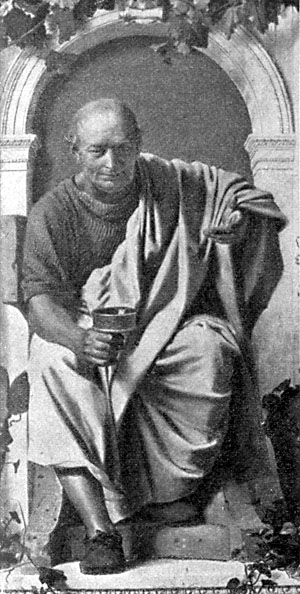 | |
| Description | A Roman satirist |
|---|---|
Horace was the son of a freed slave turned auctioneer's assistant and was probably of Sabellian hillman stock of Italy's central highlands. His father was well off enough to take his son to Rome and ensure that his son was getting the best possible education in the school of a famous fellow Sabellian named Orbilius. He then went and studied and attended lectures at the Academy in Athens, Greece. When Julius Caesar was assassinated and when the empire was in possession of two rulers, Horace joined Brutus' army and was made tribunus militum, which was an exceptional honor for a freedman's son. However, after being put in charge of Brutus' and Cassius' legions and suffering total defeat he had to retreat and find political asylum.
While seeking asylum, he works on his first book of satires which contains ten poems written in hexameter verse. These satires focused on Horace's adhesion to Octavian's attempts to deal with contemporary challenges of restoring traditional morality. He defends small landowners from large estates, combating debt and usury, and encouraging the "new men" to take their place next to the traditional republican aristocracy. The satires praised people who earn their own money and their own way in life without the help of family lineage. He believed in self-sufficiency for a quite life and it is the basis for a lot of these poems. His next few poems emphasize the mockery of Philippi and throws personal attacks and ridicule on the social abuses, not individual people. Epodes seven, nine, and sixteen shows a more sensitive side to the political verse due to the uncertainty of the future when Octavian and Mark Antony meet and discuss the current hostilities. His second book was published around 31 BC and becomes decreasingly pugnacious towards public figures such as businessmen and courtesans. The last ode of the first three books suggests that Horace did not propose to write anymore such poems. In total, Horace published three books which contained 88 short poems.
Horatian odes are short in nature and are written in stanzas of two or four lines and aims to mitigate situations with kindness rather than anger. It normally criticizes social immoralities using gentle and lighthearted wit. "It directs wit, exaggeration, and self-deprecating humour toward what it identifies as folly, rather than evil. Horatian satire's sympathetic tone is common in modern society."[3]
[4]
Commonly Known Examples of Horatian Satires:
Adventures of Huckleberry Finn Mark Twain
The Rape of the Lock Alexander Pope
Excerpts from Rape of the Lock
“Not louder shrieks to pitying Heave are cast,
When husbands, or when lapdogs breathe their last;”
According to Bonnie Latimer, the author of the journal, Alchemies of Satire: A History of the Sylphs in The Rape of the Lock, Pope shows that the death of a woman's husband is not anymore shocking than the death of a lap dog or the shattering of a china object. [5]
“The hungry judges soon the sentence sign,
And wretches hang that jurymen may dine”
According to A. E. Dyson and Julian Lovelock, the authors of the journal, In Spite of All Her Art: Pope's The Rape of the Lock, Pope satirizes judges who make court decisions too quickly.[6]
Juvenalian
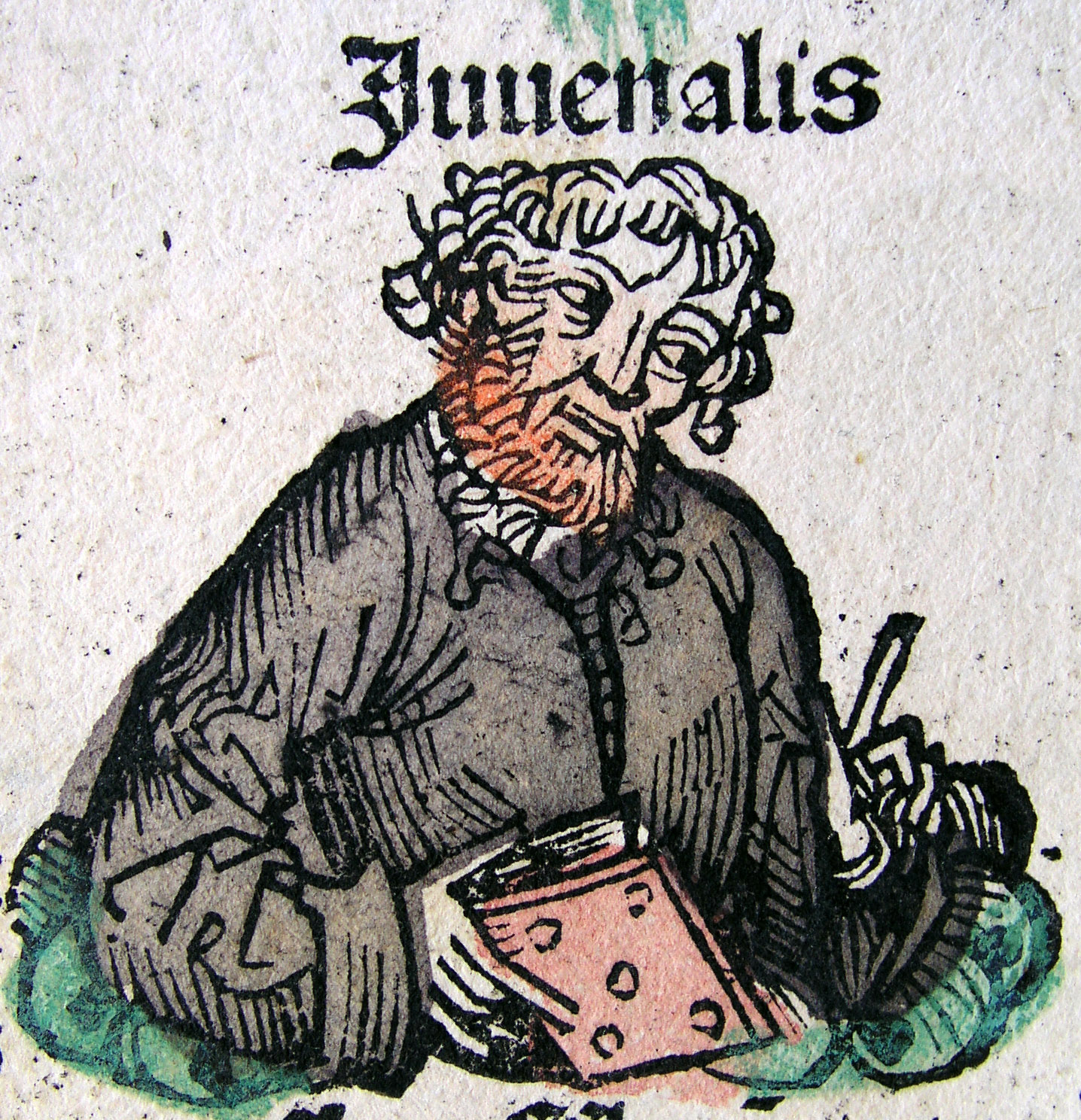 | |
| Description | A Roman poet and satirist |
|---|---|
Juvenal was a Roman poet who was considered one of the most influential and powerful satiric poets. He was born into an influential family and became an officer in the army as well as was on the way to becoming an administration on emperor Domitian's service. He was not promoted to his desired position and decided to write a satire declaring that court favors was the reason he was not promoted. This resulted in his banishment to Syene, which today is Aswan, Egypt and the confiscation of all his property. After the assassination of Domitian, he moved back to Rome where he rebuilt his life and continued writing satires. In his later years, his satires contained more human emotion, which may have marked that he had found solace from his rough beginnings in Rome. His is estimated to have died in 127 AD and had left behind 16 satiric poems.[7]
Much of Juvenal's poems attack the conditions one had lived in Rome with the Roman rulers of Domitian, Nerva, Trajan, and Hadrian. These poems were compiled into five separate books. The first book contains the first five satirical poems he had written. It encompasses his views in retrospective of the tyrannical reign of Domitian and was published between 100 and 110. The second book was the largest of books published and contained on satire 6. It covered the topics of the year 115. Book third contained satire seven , eight, and nine and opens with praised for an emperor, probably Hadrian, who created a literary institute to assist authors. Juvenal believes that this emperor is the only reason that literature may survive. Not many conclusions can be drawn on what is written in book four and book five references year 127 AD and contains satires 13-16.
Juvenal's structure to satires is unchanging and can be see in all 16 satires. There is a clear and forceful approach and tone to them. Gilbert Highet states that:
They are full of skillfully expressive effects in which the sound and rhythm mimic and enhance the sense, and they abound in trenchant phrases and memorable epigrams
Juvenal describes the striking and disgusting scenes with clarity making them unforgettable and this is done by using anger and extreme ridicule. He displays the person who performs the social immoralities appear as horrific or incompetent.
Commonly Known Examples of Juvenal Satires:
Fahrenheit 451 Ray Bradbury
Lord of the Flies William Golding
Nineteen Eighty-Four George Orwell
Animal Farm George Orwell
Candide Voltaire
Catch-22 Joseph Heller
Excerpts from Animal Farm and Lord of the Flies
Suzanne Gulbin, who wrote the journal Parallels and Contrasts in Lord of the Flies and Animal Farm states that Orwell and Golding use the satirist's tool of irony which is particularly evident in the ending of both the novels. In the end of Animal Farm, the party that is held by the pigs are seen through a window by the other farm animals using their two legs symbolically and ironically starting that they have become the evil they had revolted against. Lord of the Flies ends with the children being saved by a pompous naval officer who has no clue what had happened on the island. Their rescuers is ironically bringing the children back to the war-torn situation of WWII where killing will still continue. [8]
"We are going to have fun on this island. Understand? We are going to have fun on this island! So don’t try it on, my poor misguided boy, or else–"
According to E. C. Bufkin, the author of Lord of the Flies: An Analysis, in the Lord of the Flies, the pig is an example of satire because the pig head, an inanimate, dead object, is scaring Simon into doing what he wants. [9]
Menippean
 | |
| Description | A Greek satirist |
|---|---|
Menippus was a Cynic satirist who satirized other philosophers, and was called σπουδογέλοιος or "the man who jokes about serious things." Very little is know about his life and works because all of it was lost. Sources say that he was a slave who somehow won his freedom and lived in Thebes, Greece.[10]Though his works are lost much of his style can be seen in his imitators Varro, Seneca, and Lucian. His approach was new and inspiring because he presented his philosophical ideas in a way that is reached a very wide audience. His works abandoned the serious form of dialog and essay and instead used the cynic message in a satiric style to mock institutions, ideas and normal conventions in a mixture of prose and verse. He used unusual settings such as a decent into Hades , an auction, and a symposium to impose a striking effect on the audiences and readers. Remanence of his works can be seen in other authors works such as Petronius Arbiter who wrote Satyricon which is an ideal tale in verse and prose, but contains long digressions where the author expresses his views on unrelated topics that are not effecting the pot which is true to the Menippean tradition. [11]
The Menippean for is defined as a intellectually humorous work that is characterize by its random contents, the display of curious information, and its comical discussion of serious and philosophical topics. The humour in works such as Lewis Carroll's Alice's Adventures in Wonderland is more cheerfully intellectual and less aggressive than in works such as Robert Burton's Anatomy of Melancholy which we would usually call satires, although it holds up contemporary intellectual life to gentle ridicule.
[12]
Modern Satires
Today's satires are somewhat similar to the past satirists such as Menippus, Horace, and Juvenal, however, they still do use the following characteristics of irony and critique. The irony humorously points out the issues that are being critiqued in a way that many can see and understand. Critique aids in pointing out situations of human or organization where they fail in behaviour, vice or folly and leads to the audience desiring some sort of social change. However, this critique does not have an implicit and immediate solution to the issue at hand. They almost look to the audience to draw their own conclusions on how the change can be implemented and carried out. Megan LeBoeuf, for her senior thesis, stated that "The critiqued behavior deconstructs itself within the satirical work by being obviously absurd, most often because it is exaggerated or taken out of its normal context." [13]
In the past, there was a more certainty to what satire was, but today with the influx of shows like SNL, The Late Show with Stephen Colbert and MadTV the lines have been blurred between comedy and and actual satires. Many believe that in this day and age we use the term satire to freely. A Canadian commentator, Rex Murphy points out that "we throw the term ‘satire’ around rather too generously these days,” and “it's a free upgrade when making simple fun of someone passes as satire” [14] Today's satires differ in really only two categories where the first is the medium that the satire is presented. In the past satires were mostly poems and novels, but with the age of technology, satires are presented using a more viewable medium such as plays and television shows. The second difference is that the writers today have a lot more background information to go off of so they reference past writers works. The satires of the Greek and Roman times had very little to go off of such as old traditions and their current political turmoils.
Section 2: Deliverable
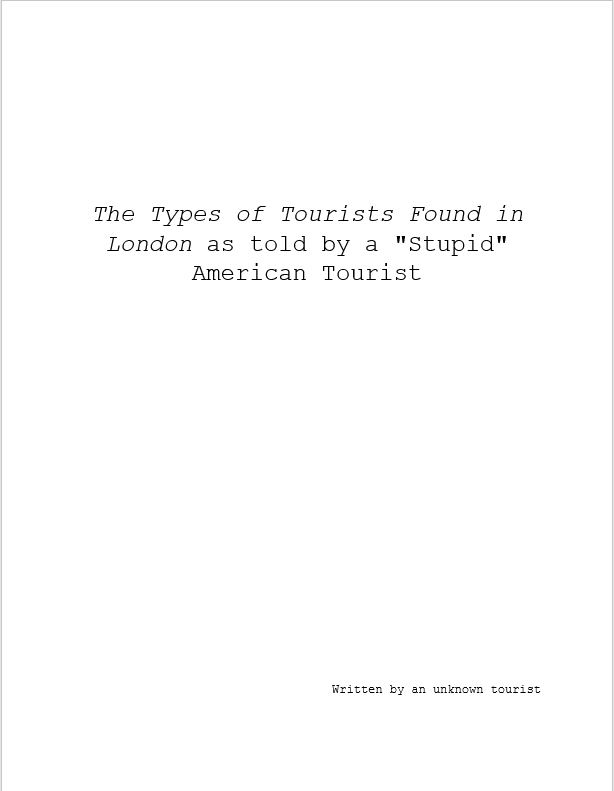 | |
| Description | Cover of The Types of Tourists Found in London as told by a "Stupid" American Tourist |
|---|---|
The Types of Tourists Found in London as told by a "Stupid" American Tourist
By researching satirical plays, I decided to implement my research into a one act satirical play, which I wrote during my time in London and attributed to "an unknown tourist". Initially, I was unsure of what topic my play would be on, but then I looked at myself and then looked at London. My play explored the effects of tourism on the local peoples and surrounding area of London and how even though tourism effects the economy in a positive way, the tourist themselves can reek havoc on the place they are exploring.
Some stories that are published in newspapers about tourist who hurt wildlife and break priceless just to get photographs are heartbreaking. By creating a play about the what damage "bad" tourists can do, I hope will shed some light on their harm to the nation they are visiting.
The Play Script
Play Synopsis
At the beginning of the play, the first scene, a tour guide is at a terminal in Heathrow Airport waiting to lead a group of five tourists through London to see the sights and sounds. The tour guide is waiting for all her members to arrive but decides to begin her search about the tour before everyone arrive because she is filled with excitement. A tourist, who is missing from the group, arrives out of breath and she greets him and continues on with her speech about what they will be doing throughout the tour. She is interrupted by another member of her group asking if there will be food any time soon. She replies that when they arrive at Blackfriars Station they will all have a chance to grab a snack. They board a train that is going to Blackfriars Station and she begins to setup a projector and screen. She asks he group what the leading cause of tourist death and arrests were. One snarky group member replies starving to death, but she ignores the comment. She explains that with her experience in this industry, the leading cause would have to be general stupidity. She then goes to the first scene of the slide.
The second scene is set a near the London Eye. There are two drunk character who believe that climbing the London Eye would be just the adventure to top off their night of excitement. They get about 30 meters up and get called down by a police officer. They ignore his call and climb higher. He requests backup, but the guy begins to slip and it is too late. We assume that he had fallen off and passed away. Then it transitions back to the train where the tourists are alarmed, but some had thought that climbing the London Eye wasn’t a bad idea until they saw the deadly outcome. The tour guide is in utter awe and shock that her tour group is that idiotic, but proceeds on with the next scene.
The third scene is set in South Kensington at the Victoria and Albert Museum. There is a group of students studying the sculptures there and are loud and obnoxious to the other patrons around them. They ignore all signs around them that say no climbing on the art and not flash photography. After taking multiple flash photos, a girl decides she cannot get the right angle of a statue, so she climbs on the one across from it. It cracks and the group runs away, but are caught by security. Then the scene transitions back to the train, where the group still think that doing this was okay. The tour guide is flustered and makes comments on how she should have stayed in school.
The fourth scene is set in one of the many park in London. There is a romantic couple who is walking around and has food to feed the birds. They then think of covering one of them in bread would create a cute Mary Poppins moment but are surprised when the birds attack the couple for the bread. The couple come out of the situation with lots of scratches and cuts and there is an assumed break up following the event. The tour group still does not see what is wrong with feeding the birds, so the tour guide makes a comment on how the group should have a raised IQ.
The final scene is set in Trafalgar Square at night. There is a group of girls who are taking pictures in very dangerous situations like in the street with oncoming traffic. They are almost hit multiple times but don’t see the harm of what they are doing. They then go drinking and try to take more pictures. They then cause a 10-car pileup and the police come and arrest them. The tourist group then begins to understand the gravity of these situations and that the people are putting themselves and others in harm’s way. The train ride ends just in time and the tour guide and her group head out of the station and into the hustle and bustle of the London streets.
Contextual Examples of Juvenalian Satire
Juvenalian satire focuses on the degradation and vilification and in this play, specifically scene two, where two women were depicted as being incompetent and complicit in their own malicious acts towards the everyday citizens of London. They decided that walking and taking pictures in the middle of the road cause a problem. Because of their negligence, they cause a ten car pileup, which results in many people to be hurt and three people to die. Chole states, "Whatever if they hit us isn’t it their fault?" She doesn't care about anyone but herself and her own enjoyment while she is in London even if it causes others pain. This scene is profound and striking and their idiocy is ridiculed with anger and abhor. The death of loved ones was caused by two girls making the decision to take pictures on a busy road.
Juvenalian satire also focuses on describing striking and disgusting scene to make them unforgettable. In scene two, three boys believed it would be a fun idea to top of their night on the town in London. Their decision to climb the London Eye lead to the death of one of the young men and points out the extreme outcome of their reckless decision. The police officer ridicule the boys for choosing to climbing the London Eye in the first place stating, "Goddam tourist thinking they’re the shit." He doesn't realize the gravity of the situation until it is too late.
Contextual Examples of Horatian Satire
Horatian satire focuses on the using exaggeration and self-deprecating humour to express the gravity of the situations that they put themselves in. It playfully criticizes a social vice thorough gentle and lighthearted humor. I used Horatian satire quite a bit more than Juvenalian because I wanted this play to be a more blithe comedy with multiple lessons than a harsh reality check fulled by anger and ridicule.
In scene three, the group of students are depicted as rude and annoying and eventually break a priceless sculpture in a museum. The lighthearted humor comes from the tour guide and the tour group on the train when they comment on what the group had or had not done wrong. Tourist one states," That group is so stupid if you are going to run from the security you always need to carry marbles to trip them up." The satirists tool of irony shows that the tour group is calling the group of students stupid, even though they themselves had thought that climbing on the statues was alright as well.
In scene four, a young couple decides that feeding the birds and laying out bread on one of their bodies would be a cute romantic idea. This is an exaggeration of what would actually happen in real life but is exaggerated to stress how their idea is critically flawed. Reese ironically states, "Sure, like what could go wrong." They didn't realize that the birds would attack when if there was food involved. The irony adds the deprecating humor and exaggerated situation add to the absurdity of the situation that the couple got into.
Conclusion
Satires are the most skewed genre of literature today because many people have a general idea of what it is but do not really know the textbook definition of a satire. My objective was to understand what an actual satire meant and what defining factors created a satire. I then wanted to try my own hand at creating a more modern satire based on the negative impacts of tourism on the surrounding tourist areas in London such as the London Eye and local museums. Based on my research, I found that modern satires were different from satires of the past because of two factors, modern technologies and more background information which both were based on a factor that cannot have been created in the past, time. If anyone is interested in this topic and would like to expand upon it, they may want to look more into modern days satires and do a bit of an analysis of a satire from the Roman time period and a satire from the today such as The Adventures of Huckleberry Finn which deals with the slavery and Mark Twain's disapproval of it.
References
- ↑ HIGHET, G. (1962). Anatomy of Satire. Princeton University Press. Retrieved from http://www.jstor.org.ezproxy.wpi.edu/stable/j.ctt13x0t9t
- ↑ Hexameter. (n.d.). Retrieved May 25, 2017, from https://www.poetryfoundation.org/resources/learning/glossary-terms/detail/hexameter
- ↑ Sharma, R. "Comedy" in New Light-Literary Studies.
- ↑ Grant, M. (n.d.). Horace. Retrieved May 31, 2017, from https://www.britannica.com/biography/Horace-Roman-poet
- ↑ Latimer, Bonnie. "Alchemies Of Satire: A History Of The Sylphs In The Rape Of The Lock". The Review of English Studies 57.232 (2005): 684-700. Web.
- ↑ DYSON, A., & LOVELOCK, J. (1971). In Spite of All Her Art: Pope's 'The Rape of the Lock' Critical Survey, 5(3), 197-210. Retrieved from http://www.jstor.org.ezproxy.wpi.edu/stable/41553878
- ↑ Highet, G. (n.d.). Juvenal. Retrieved May 31, 2017, from https://www.britannica.com/biography/Juvenal
- ↑ Gulbin, Suzanne. "Parallels And Contrasts In "Lord Of The Flies" And "Animal Farm"". The English Journal 55.1 (1966): 86. Web.
- ↑ Bufkin, E. (1965). Lord of the Flies: An Analysis. The Georgia Review, 19(1), 40-57. Retrieved from http://www.jstor.org.ezproxy.wpi.edu/stable/41398168
- ↑ Stephanus Byz.; Strabo, xvi.
- ↑ The Editors of Encyclopædia Britannica. (n.d.). Menippus. Retrieved May 31, 2017, from https://www.britannica.com/biography/Menippus
- ↑ Hornblower, Simon, and Antony Spawforth. "Menippean Satire". The Oxford Classical Dictionary 2003: 413. Print.
- ↑ LeBoeuf, Megan. "The Power Of Ridicule: Analysis Of Satire". Undergraduate. University of Rhode Island, 2007. Print.
- ↑ Murphy, Rex. "Satire Has Forgotten Its Function." The Globe and Mail, 2006. Vol. A.
